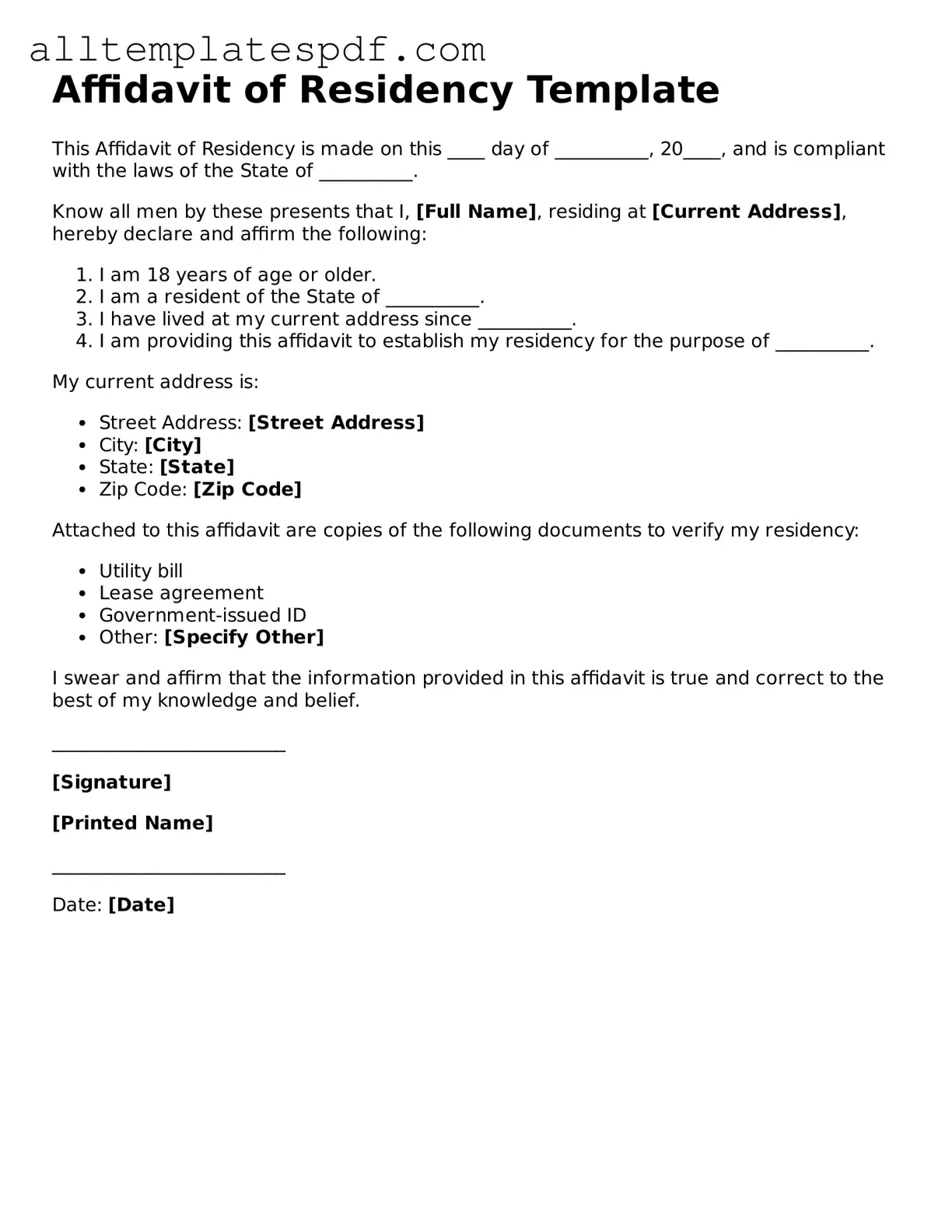Filling out the Affidavit of Residency form can seem straightforward, but many people make common mistakes that can lead to delays or complications. One frequent error is providing incorrect or outdated personal information. Ensure that your name, address, and contact details are current. Double-check these details before submitting the form.
Another mistake is failing to sign the affidavit. An unsigned affidavit is not valid. Remember to sign the document in the designated area. Additionally, some individuals overlook the requirement for a witness or notary. Depending on your state’s regulations, you may need a third party to verify your identity and the information provided.
People often forget to include all necessary supporting documents. If the form requests proof of residency, such as utility bills or lease agreements, include those documents. Omitting them can result in rejection of your application.
Inaccurate dates can also create problems. Make sure all dates, including when you moved to your current residence, are correct. An error here could raise questions about your residency status.
Another common issue is not using the correct form version. Forms can be updated, and using an outdated version may lead to complications. Always check for the latest version before filling it out.
Many individuals neglect to read the instructions thoroughly. Each section of the form may have specific requirements that need attention. Skipping this step can result in incomplete or incorrect submissions.
Some people mistakenly assume that all questions are optional. Every question on the affidavit must be answered. Leaving any section blank can lead to delays in processing.
Another mistake is providing vague or unclear information. Be specific and concise in your answers. Ambiguities can cause confusion and may require further clarification.
Finally, failing to keep a copy of the completed affidavit can be problematic. Always make a copy for your records before submitting the form. This can be useful if there are any questions or issues later on.
By avoiding these mistakes, you can ensure a smoother process when submitting your Affidavit of Residency form. Careful attention to detail will help prevent unnecessary delays and complications.
